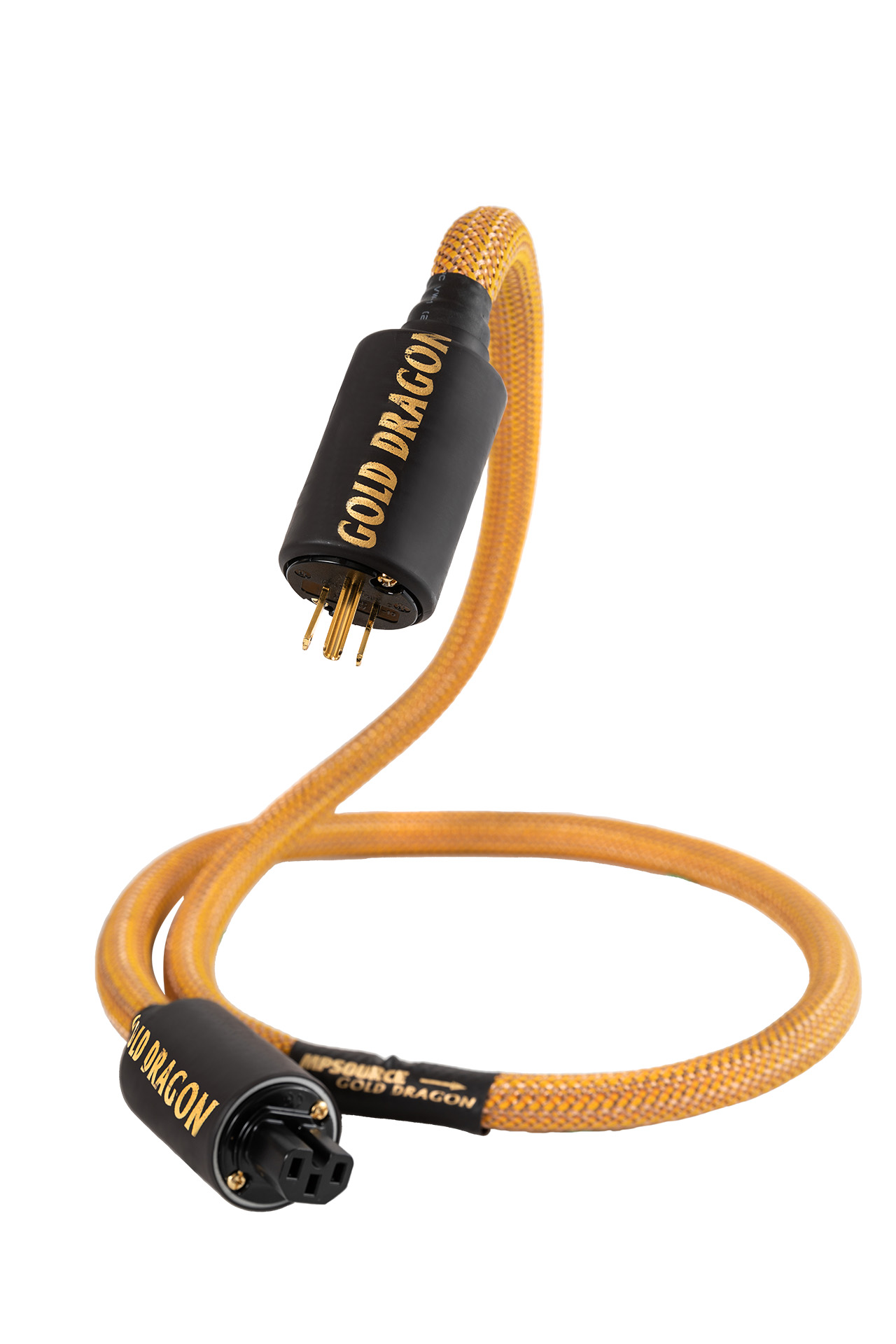GD Power Pro (1.5M)
Gold Dragon Power Cable Pro (1.5M)
Length : 1.5M Conductor material : 6N OCC + S OCC OD : 17mm
Related Products
Mr. Wen-Chang Li (1946 – Creator of the Golden Dragon Cable)
From a young age, Mr. Li was passionate about music and audio. In his early years, he hand-built amplifiers and LP turntables, many of which still function perfectly even after three to four decades. After discovering the profound impact cables have on sound quality, he began researching cable-making techniques and materials. Because of his deep love for music and extensive equipment collection, he needed many cables—so he made them himself. Through constant refinement and testing with fellow audiophiles, his handcrafted cables gradually gained a reputation for exceptional performance, earning high praise from audio enthusiasts.
Mr. Chen-Hsiang Hung – Founder of MPSOURCE
With over 20 years of experience in OEM manufacturing and mass production of high-end audio cables, Mr. Hung founded MPSOURCE to bring exceptional audio cables to a wider community of audiophiles. The Li-series Golden Dragon Cables stand out with their elegant golden-yellow appearance and flexible, user-friendly construction. Paired with high-quality connectors, they deliver vocals and instruments with natural weight and clarity. The tonal details and micro-dynamics are rendered with stunning precision—airy, lifelike, and immersive. The soundstage becomes wider, deeper, and more transparent, offering greater dimensionality and frequency extension.
A Cable Born in the Year of the Dragon
2024 is the Year of the Dragon, making it the perfect time for the launch of the Golden Dragon Cable. This release embodies the spirit of “the right time, right place, and right people.”
After 36 years of tireless research driven by pure interest and dedication, Mr. Li’s handcrafted signal, power, and speaker cables have evolved into works of acoustic artistry—similar in spirit to the traditional crafting of musical instruments. The result is sound transmission that is accurate, natural, relaxed, and graceful—full of musicality and capable of delivering an immersive listening experience that is hard to walk away from.
The hope is that the Golden Dragon Cable, launched in this auspicious year, will bring joy and satisfaction to every music lover.
Powered by MPSOURCE Core Technologies
Core Technologies:
- Unified Directionality
- Loop
- Energy Balance
What Are MPSOURCE’s Core Technologies and Their Benefits?
1. Unified Directionality
In conventional cable manufacturing, conductors are often twisted in opposing directions for efficiency, which creates conflicting crystalline orientations. MPSOURCE, however, insists on aligning the crystal structure of every conductor in the same direction before bundling.
Why does this matter? Mismatched crystal directions can cause music to sound muffled at low volume and chaotic at high volume. Imaging becomes imprecise and bass feels loose. In contrast, when copper wires share a unified crystalline direction, the sound remains detailed at low volume and clean even during high-dynamic passages. Music listening becomes a truly enjoyable and emotionally fulfilling experience.
2. Loop
Conductors must align with the flow of current or signal. For example, with AC power, current flows in through the live wire and exits through the neutral wire—opposite directions. Cable twisting and crystal alignment must match these flows to ensure proper electrical behavior and sonic clarity.
3. Energy Balance
Sound energy spans high, mid, and low frequencies. Achieving balance among them is crucial. This involves calculating the surface area of each conductor, selecting insulation materials, using appropriate twisting methods, and incorporating effective damping materials. Each of these factors influences how frequency energy is distributed.
Moreover, different applications—multi-core vs. single-core, signal cables vs. speaker cables, composite vs. pure materials, analog vs. digital—require distinct configurations. The goal is to reach both optimal energy balance and maximum transmission efficiency for each specific use case.








